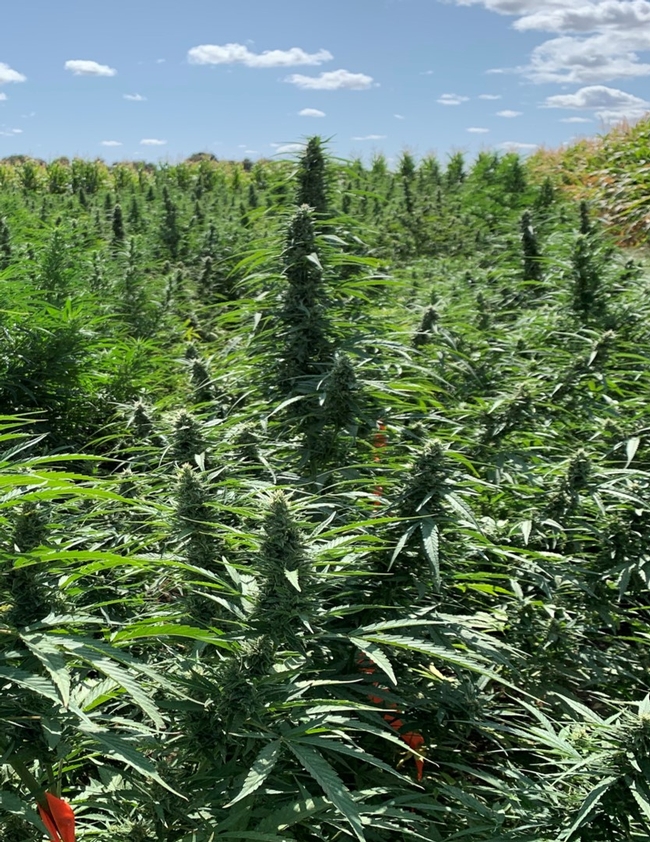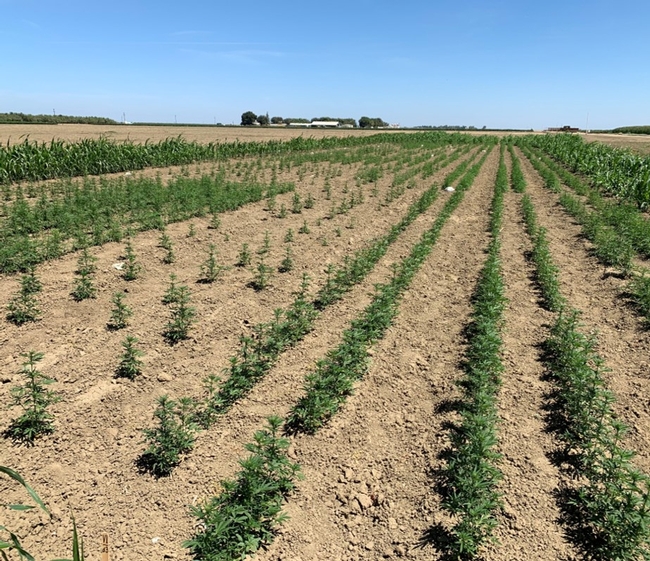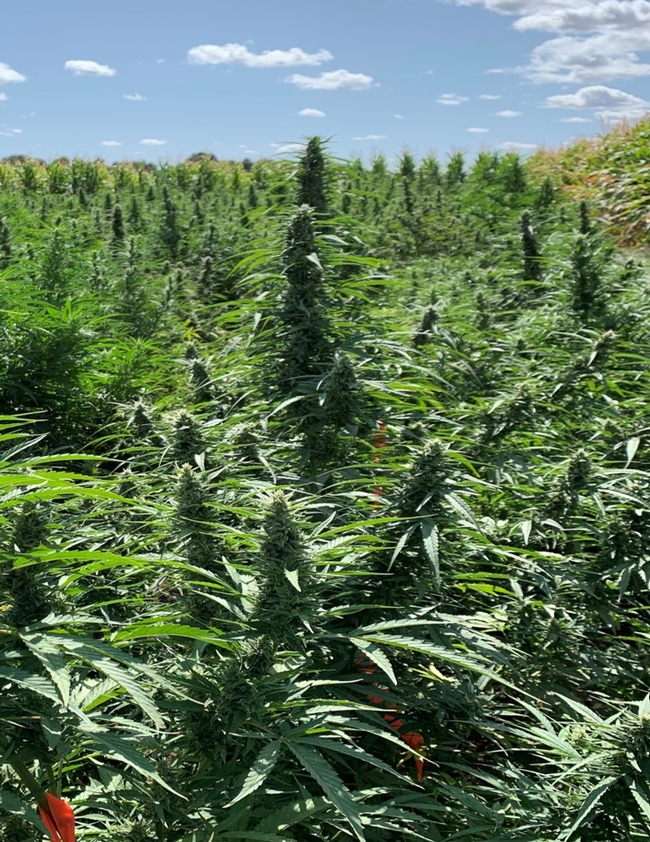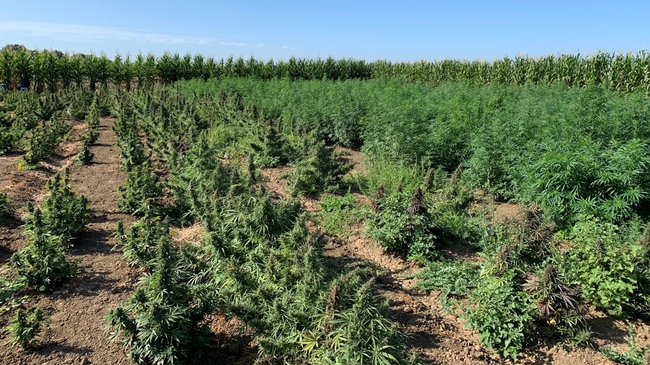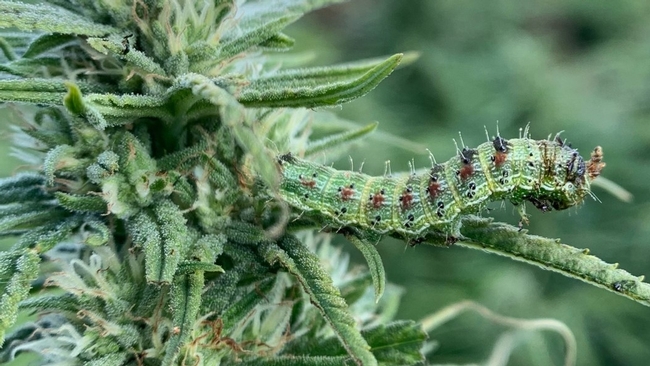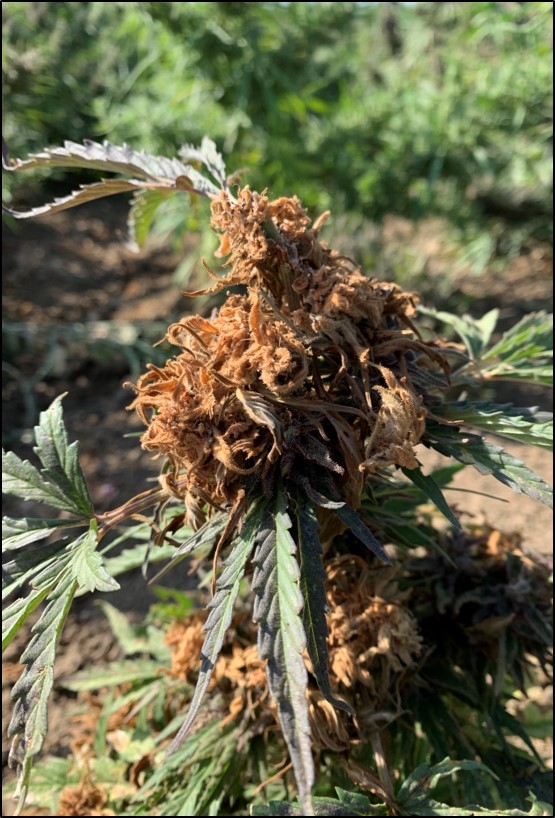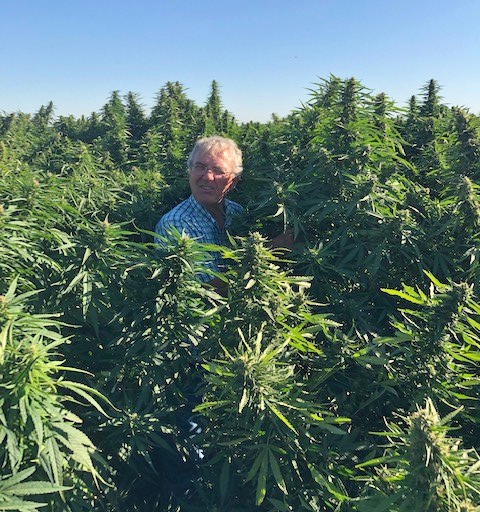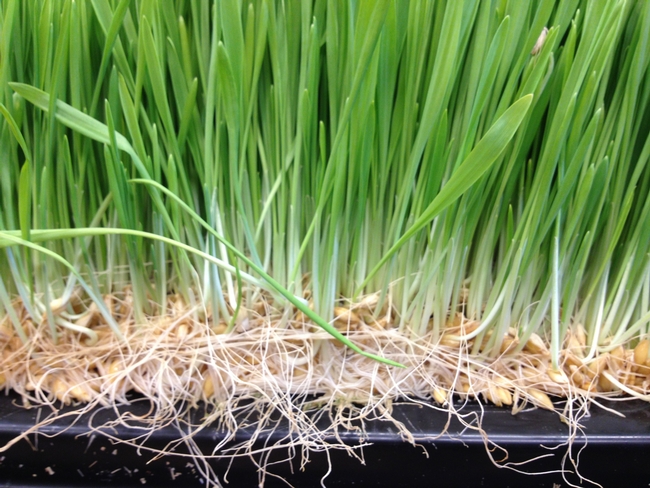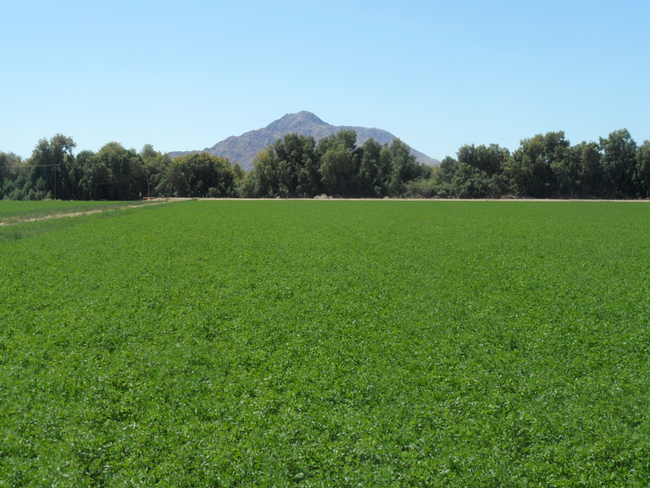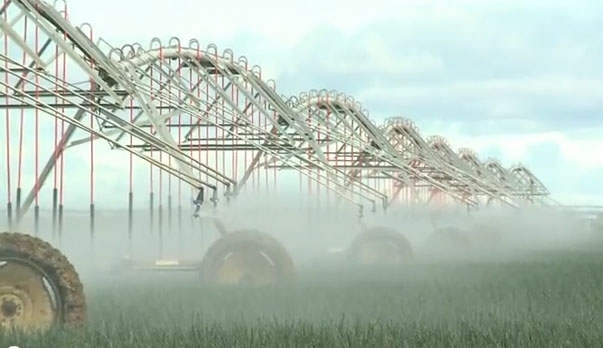Posts Tagged: Dan Putnam
UC Agriculture and Natural Resources hemp research continues in 2020
Opportunities and challenges for industrial hemp production in California are being revealed in a series of UC Cooperative Extension research projects.
As a crop relatively new to California growers and researchers, there is still much to learn about variety choices, how varieties and crop responses differ across regions with different soils and climates, best practices for nutrient management, and pest and disease issues.
UCCE industrial hemp field research efforts began in 2019 after the previous year's Farm Bill declared the crop should no longer be considered a controlled substance, but rather an agricultural commodity. Hemp is valued for its fiber and edible seeds, however, in California, producing hemp for essential oils including medicinal cannabidiol (CBD) is thought to offer the best economic outlook.
2020 studies with Front Range Biosciences
UCCE is working with Lafayette, Colo.-based Front Range Biosciences to test 10 of the company's hemp varieties in Ventura County and the west side of Fresno County. In Fresno County, the trial is underway at the UC West Side Research and Extension Center (West Side REC) under the direction of UCCE specialist Bob Hutmacher. UC Cooperative Extension advisor Annemiek Schilder, the study leader in Ventura County, intended to conduct the trial at the UC Hansen Research and Extension Center in Santa Paula, but the Ventura County Board of Supervisors enacted an emergency ordinance in January prohibiting hemp fields within a half mile of residential areas and schools because of the odor.
“The odor can be quite strong,” Schilder said. “Once plants start flowering, some varieties smell skunky. But the crop is related to hops, and other varieties have a more pleasant hoppy smell. Weather conditions also play a role in odor complaints.”
The Ventura County industrial hemp trial was planted at an Oxnard farm where a hemp crop was already being grown.
The trial includes mostly photoperiod-sensitive cultivars, where the flowering response is triggered by shortening day lengths in mid- to late summer in this latitude. Varieties that do not require the shortening day length to flower are called auto-flower varieties.
“Industrial hemp cultivars grown for essential oils, such as CBD, can be photoperiod-sensitive or not sensitive,” Hutmacher said. “The auto-flower varieties have potential to be more versatile in some production systems, in that they could be planted at a broader range of times of year since they don't respond to day length.”
The studies include growth and yield evaluations, monitoring for pest or disease threats in the San Joaquin Valley and coastal California, and periodic plant sampling to monitor the changes in plant THC and CBD levels over time. THC (tetrahydrocannabinol) is the psychoactive compound found in greater concentrations in cannabis varieties grown for marijuana. Legal requirements for industrial hemp production for essential oils, fiber or seed mandate monitoring concentrations of THC. The crop may not exceed 0.3% at harvest or it must be destroyed.
2020 cooperative irrigation study with Oregon State University
In a new 2020 study led by Oregon State University, drip irrigation trials were set up in California at the UC West Side REC and the UC Davis campus in addition to three sites in Oregon. These studies were set up to determine water use of industrial hemp under irrigation regimes ranging from about 40% to 100% of estimated crop water requirements, with comparisons of responses observed across the five sites with different soils, climate and other environmental conditions.
The same four varieties (two auto-flower and two photoperiod-sensitive) are being grown in irrigation studies at each of the five sites. The California locations in these trials were both planted in mid-June. The two auto-flowering varieties were harvested in late August and early September. The researchers expect to harvest photoperiod-sensitive types in late September or October.
The total water use of the different hemp cultivars under the different irrigation regimes will be determined using applied water measurements and assessments of soil water use between planting and harvest for each cultivar.
Some of the irrigation treatments impose moderate to more severe deficit irrigation to help assess the crop responses to water stress. Deficit irrigation is a method of conserving water by applying less than what might be considered optimum for maintaining rapid growth.
“This plant appears to be quite tough under deficit irrigation,” Hutmacher said. “We need to learn more about benefits and drawbacks to stressing the plants.”
The auto-flower cultivars tested have used less water than the photoperiod-sensitive cultivars because they can be grown in a shorter season. In the San Joaquin Valley, auto-flower cultivars in these studies were ready for harvest in 75 to 90 days after seeding.
“Auto-flower varieties may have potential to be grown in the spring and harvested by early summer, or planted in late summer and harvested before winter. With a short-season crop, and with a decent water supply, farmers could consider double-cropping with such varieties, increasing profits,” Hutmacher said.
2019 and 2020 planting density studies
In cooperation with Kayagene Company in Salinas, Dan Putnam, UCCE alfalfa specialist at UC Davis, and Hutmacher have conducted studies in 2019 and 2020 with two auto-flower varieties to determine crop growth, yield and THC and CBD concentrations of planting densities ranging from about 7,500 plants per acre to 30,000 plants per acre. Since some of the auto-flower varieties are smaller and earlier maturing than many photoperiod-sensitive cultivars, data in these studies will help determine the tradeoff between higher densities needed to increase yields versus increases in the cost of growing more plants.
The studies also provided opportunities for the scientists to assess plant-to-plant variation and impacts of flower bud position on THC and CBD concentrations.
“We feel that when this type of basic sampling method data is collected across a range of cultivars differing in plant growth habit, it may help better inform both researchers and regulatory groups in decisions regarding how to monitor plant chemical composition,” Hutmacher said.
Hutmacher and Putnam are also working with scientists at Davis-based Arcadia Biosciences to refine sampling methods.
“There are a lot of challenges when it comes to estimating maturity with these varieties,” Putnam said. “Each variety will mature at different times and deciding when is the best time is a key decision.”
Early UC hemp research already yielding results
For the first time ever, UC Agriculture and Natural Resources (UC ANR) researchers harvested an industrial hemp crop at one of its nine research and extension centers this fall.
“It's an interesting crop,” said UC Cooperative Extension specialist Bob Hutmacher. “There is a tremendous amount of research that can be done to understand its growth and best cultural practices, optimal planting dates either by seed or transplants, irrigation and fertilization management, and, particularly, to address pest and disease management.”
The research project is part of a two-location study, one at the UC West Side Research and Extension Center (WSREC) in Five Points, in western Fresno County, and an identical companion study at the UC Davis farm headed by UC Cooperative Extension specialist Dan Putnam and UC Davis professor and plant breeder Charles Brummer. These initial studies included a planting density by variety trial and a breeding observation block representing a wide range of genetics. The research was launched mid-summer this year after the 2018 Farm Bill declared that hemp should no longer be considered a controlled substance, but rather an agricultural commodity.
Industrial hemp can be produced for grain and fiber, however, many growers currently consider the most profitable component of the crop to be cannabidiol, or CBD, and related compounds. CBD is valued for its purported health benefits. It is said to reduce inflammation, pain, nausea, depression and anxiety, among other conditions.
Hutmacher said he and colleagues around the state are interested in learning about industrial hemp production opportunities, and feel there is a place for UC ANR research to support the fledgling industry. Already, there are some observations coming out of these small trials.
“Some people believe that hemp is a pest- and disease-free plant. That's not what we found,” Hutmacher said. “In the absence of suitable measures for control, corn ear worms seemed to thrive in hemp, and did an astounding amount of damage to cultivars in our small plots.”
The scientists were forced to use a pesticide to control the pest and reduce damage to developing buds. The hemp produced in the trial will be destroyed after harvest data has been collected. The experience with corn ear worm and other pest issues demonstrate that pest control will require significant study, particularly if a goal is to produce the crop organically.
“Markets for some industrial hemp products may require low pesticide residues. If hemp is produced organically, some preliminary observations this year suggest farmers will have to put a big effort into pest and disease control,” he said.
Plant breeding can be another area of UC research. Hemp's natural genetic variations produce plants that vary widely in growth habit, size, response to day length, and time to maturity. There are hemp cultivars that mature when the plant is 18 inches tall and others that shoot up 12 feet high at maturity. Hemp grown for CBD production from seed or as transplants can vary greatly in size and other characteristics, such as amount of branching and the number of flower structures per plant. Multiple plant and production system factors also will influence options for mechanical versus hand harvesting.
Another breeding concern for growers is producing a crop with economic levels of CBD or other compounds of commercial interest, while staying within regulatory limits for THC (tetrahydrocannabinol), the psychoactive compound found in marijuana, a related plant. According to the California Department of Food and Agriculture, an industrial hemp crop grown in the state may have no more than 0.3% THC when plant samples are analyzed.
“This will be a challenge for growers. You don't want to risk too high a THC level,” Hutmacher said. “Farmers must test to make sure THC is at a level to meet regulations. If it's too high, CDFA regulations would require the crop be destroyed.”
Working with UC breeders, integrated pest management scientists, agronomists, irrigation specialists and agricultural engineers, there should be good opportunities to finesse hemp production at UC ANR's network of research and extension center system across California.
Research center locations stretch from Holtville, in the low desert at the California-Mexico border, to Tulelake, just south of the Oregon border. Other centers ideal to answer hemp research questions include the UC Davis campus, the Hopland REC in Mendocino County, the Hansen REC in Ventura County, and the South Coast REC in Orange County.
UC ANR plans to expand its hemp research in 2020. For more information, contact Bob Hutmacher at (559) 260-8957 or rbhutmacher@ucdavis.edu.
Madera farmer says feeding sprouted grain to sheep improves milk quality
A Madera farmer is sprouting barley hydroponically inside shipping containers on his farm to produce feed for his sheep, reported Ezra David Romero on Valley Public Radio.
“I think that's a big advantage if you don't have a lot of land,” the farmer said. “You can produce a tremendous amount of feed in a very, very small area with a very little amount of water.”
However, UC Cooperative Extension alfalfa specialist Dan Putnam noted in the story that the system may not pencil out.
"If you really apply a little bit of economics to it and animal nutrition to it, it doesn't appear quite as promising as one might think," Putnam said.
There is no question that animals find the sprouted barely delicious. Online videos show cattle and horses "gobbling up sprouted grain like a vegetarian at a salad bar," Putnam wrote in a 2013 blog post that asked Does hydroponic forage production make sense? Things are not always as they seem. Animal ration calculations are based on dry matter since water is provided separately.
"A feed with 90 percent water (such as sprouted grain) has considerably less 'feed value' than something with only 5 percent water (such as the grain itself), on a pound for pound basis," Putnam's blog post says.
Feeding sheep sprouted barley makes sense to Mario Daccarett, the owner of the Golden Valley Farm. He said cheese made from his sheep's creamy milk is sold in places like Whole Foods.
"They have our cheese there and they tell me that our Golden Ewe cheese is the best for grilled cheese sandwich ever, and they have over 500 different varieties of cheese there," Daccarett said.
The farmer feeds his sheep one part oats and hay and one part sprouted barley.
“You do the math and you say, 'Well, yeah, it might not work,' but once we started doing it we found out that sheep tend to eat less, more nutrition, more enzymes,” Daccarett said. “So they become more efficient.”
Drip irrigation in alfalfa cuts water use, but isn't for everybody
The drought is forcing farmers to reexamine the way they water their crops, but converting to drip irrigation in alfalfa is unlikely to be widely implemented, reported David Wagner on KPBS Radio News.
The drip irrigation system conserves water - almost by half, said farmer Jack Cato - but is expensive and requires regular maintenance. After six years, the drip system is yet to pay for itself.
"Drip irrigation is not the answer for everything," said Khaled Bali, irrigation advisor with UC Agriculture and Natural Resources (UC ANR). "I would not recommend switching every acre in the Imperial Valley to drip irrigation."
Cato added that new drip irrigation users face a steep learning curve.
"Whatever farm starts doing this, he needs to take baby steps," Cato said. "It's not something you learn overnight, or in a book. You have to study your fields daily."
For more on water use and alfalfa, see Why alfalfa is the best crop to have in the drought by Daniel Putnam, UC ANR Cooperative Extension specialist based at UC Davis, in the Alfalfa & Forage Blog.
UC scientists helping farmers reduce water needs
Rain in December raised hopes for an end to the California drought, but storms have stayed away since the New Year began. January 2015 is shaping up to be the driest January since officials began keeping records 137 years ago, according to the National Weather Service.
California's continuing water crisis is leading to decreased and more variable water supplies for San Joaquin Valley farmers, and the region's forage production sector is being hit particularly hard.
“Corn silage and alfalfa have traditionally used lots of water and current and future water restrictions are forcing many farmers to rethink their forage production strategies,” said Jeff Dahlberg, UC Cooperative Extension specialist. “I know of one dairy that had to cut-off their summer irrigations of alfalfa to get their corn silage done.”
To help the agriculture industry make do with less water, a team of UC researchers began a long-term research project last year by growing alfalfa, sorghum and corn under a state-of-the-art center pivot irrigation system. The system, donated by industry partners, is installed at the UC West Side Research and Extension Center near Five Points. Reinke Inc. donated the center pivot, Senninger Irrigation donated nozzles, and Rain for Rent created the infrastructure that gets water and power to the 16-acre research plot.
“We see tremendous possibilities for overhead irrigation in cotton, alfalfa, corn, onions and wheat production,” said Jeff Mitchell, UC Cooperative Extension specialist and the project lead. “There is also great potential for overhead irrigation in California's $5 billion dairy industry for more efficiently producing feed crops like alfalfa, corn and sorghum.”
All aspects of production – including irrigation system performance, crop growth and development, weed control, water application, and economic viability – are being monitored by researchers from UC Cooperative Extension, Fresno State University and UC Davis, plus farmer cooperators and industry partners.
The primary focus of the study is comparing regular irrigation levels with regulated deficit irrigation, a system in which water is withheld at certain times in crop development in order to minimize crop losses even when water is short.
“By controlling the speed of the pivot and by using special water application nozzles that apply precise and different amounts of water, we will get either full irrigation, three-quarters of the full amount or about half of the full irrigation quantity over the course of the season,” Mitchell said.
The researchers will apply small, precise amounts of water during the vegetative growth stage for sorghum and both immediately before and after monthly harvests and during the mid- to late-summer period for alfalfa when San Joaquin Valley productivity typically is reduced under flood irrigation.
“We expect to produce marketable and economic yields for sorghum using 25 percent less water as has been achieved under pivots in Texas and similar increases in crop water productivity for alfalfa,” Mitchell said. “This work will inform and improve future water management strategies in California.”
Overhead irrigation systems, such as center pivot systems, are the most prevalent form of irrigation nationwide; however, they have not been widely adopted in California to date. Recent technological advances in overhead irrigation – which allows integration of irrigation with global positioning systems (GPS) and management of vast acreage from a computer or smart phone – have boosted farmers' interest in converting from gravity-fed surface irrigation systems, which are still used on 5 million acres of California farmland.
The research is funded in part with a grant from the UC California Institute for Water Resources. In addition to Dahlberg and Mitchell, UC Cooperative Extension alfalfa specialist Dan Putnam and UCCE advisor in Fresno County Dan Munk are collaborators on the project.
An initiative to improve California water quality, quantity and security is part of the UC Division of Agriculture and Natural Resources Strategic Vision 2025.
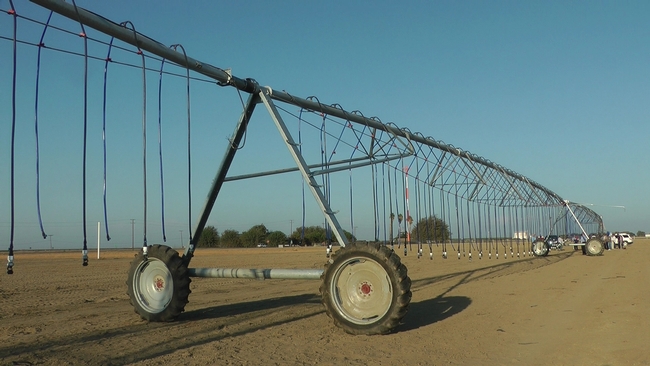
The center pivot system at the UC West Side Research and Extension Center before crops were planted.

